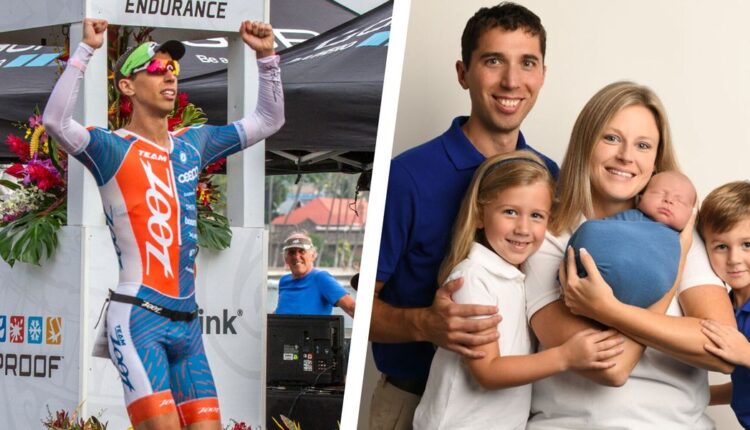“The next station is…Summit.”
My eyelids slowly rise, contacts dry and stuck to my eyes. I grab my bag full of sweaty training gear from that morning’s threshold ride and stand up. Whoa. I feel sluggish. Of course I do. I got up at 5 this morning, did an intense session on the bike for an hour and a half, worked a full day on Wall Street, and now I’m commuting home on the train. I have a hill workout tonight that I don’t feel like doing, but I need to push through and get it done. I’m training for the IRONMAN World Championship after all.
Even after running hard up a hill for 5 minutes with a heart rate north of 180, somehow my legs still felt sluggish, and not just for the first rep, but all five of them. What’s happening!? I must just be off today…
More From Men’s Health

But it wasn’t just that day. Week after week, I got off the train feeling lazy, and it continued right through any of the evening workouts I had. I’d trained hard for 5 years and had never felt this way before. In addition to the fatigue, I had no interest in sex for days, or even weeks on end. Now that’s weird. I’m only 28 and too young to have libido problems!
This is how I felt having low testosterone due to overtraining and under-fueling my endurance exercise, a condition known as RED-S, or Relative Energy Deficiency in Sport, which is much more common than people realize. The term RED-S was born out of the Female Athlete Triad when researchers discovered that it affects both men and women. “RED-S can affect many aspects of life including energy levels, sleep patterns, mood, sex life, fertility, cognitive ability, bone health, and body composition,” explains Anthony Hackney, Ph.D., a veteran researcher on exercise-induced low testosterone in men and a professor at UNC Chapel Hill. “Furthermore, the combination as well as the magnitude of symptoms that each person experiences are different.” For me, it was chronic fatigue, low libido, body fat retention, and I later discovered that I had low bone density when I sustained a bone stress injury. A diagnosed stress reaction, a precursor to a stress fracture, in my right femoral neck combined with my history of low testosterone led my orthopedist to believe I might have low bone density, so she ordered a DEXA. She was right and I was put on crutches for 8 weeks to allow my leg to heal.
To the Doc
For months after I noticed the symptoms of low testosterone, I didn’t know what the problem was. Then I read a blog by pro triathlete Cody Beals that sounded a lot like what I was experiencing, and made an appointment with my primary care physician. The doc didn’t believe that a fitness specimen of 28 years could have low T but agreed to test me anyway. To his surprise, my total testosterone was measured at 153 ng/dL (the “normal” range is about 264 to 916 ng/dL).
Cody’s blog mentioned reducing training to restore testosterone levels, but by then it was too close to my A race, the IRONMAN World Championship in Kona, Hawaii to just stop training, especially because I was still performing well. I continued training and placed 72nd overall in Kona before I cut the cord.
Though at odds with my A-type personality, I forced myself to take two weeks off training and I ate more. In just those two weeks, my testosterone levels rose to 256ng/dL, nearly a 70 percent increase over my known low point, though still not in the range of “normal.” It took nearly a year, numerous doctor visits, and a plethora of measures described below, to return to “my normal.” Here’s how I did it.
7 Measures That Restored My Testosterone Levels
1. I found the right doctor.
Most people, including doctors, aren’t aware that male endurance athletes can develop low T. I contacted at least three doctors, including an endocrinologist who had no idea the link existed, before finding the right one. Finding the right doctor who understands these problems is critical. I ultimately found an internist and an orthopedic doctor who were very familiar and knew how to treat the root cause.
2. I ate.
I ate more, I ate right, and I purposely packed on body fat. While I was still training heavily, I calculated my calories consumed alongside my calories burned for a few days (without changing my eating behavior), and I noticed a rather large disparity. I was eating about 3,500 calories per day, way more than the average adult, but far less than I needed to sustain the level of activity during intense training blocks, which likely required more like 4,500 calories per day. Dr. Hackney says that “45 calories of food daily for each kilogram of fat-free mass an athlete has are current recommendations for appropriate energy intake.” Fat-free mass is made up largely of muscle.
With the help of doctors and nutrition experts, I ensured I was getting enough healthy fats and I took Omega-3s, zinc, vitamin D, and magnesium, which they explained can help improve testosterone levels when there are deficits. I didn’t drink often as it was, but I kept my alcohol consumption to a minimum because it has been shown to negatively impact testosterone.
My body fat percentage, according to the DEXA scans I had done, was very low—around 3 percent. By eating more, I was able to quickly bring it up above 5 percent, a safer place to be when it comes to RED-S. There’s a reason why ESPN’s Greatest of All Time Endurance Athlete, Mark Allen, said “be fat in July to race well in October.”
3. I slept.
I love to sleep, but for years I was short-changing my sleep for the sake of training. Where I used to average over 8 hours per night, I found myself averaging barely over 7 hours, with some nights even less. “Regular people” can get away with sleeping less than 7 and a half hours per night, but not endurance athletes. “Getting high quality sleep for around 7 and a half to 9 hours per night is critical to optimize your health and performance as an endurance athlete,” notes Dr. Hackney.
4. I stopped training so much.
At first, I backed my training way down and my fitness took a hit. I wanted to restore my health and see the needle move. It did move, but when I started training again, I saw the T levels go back down and the symptoms return. I learned from Cody and the doctors that it’s harder to dig yourself out of a hole than it is to maintain your hormones, but Cody proves that it’s possible because he’s won several IRONMAN events with normal hormone levels after he had crushed them years earlier. I tried to follow in his footsteps because I was still on a mission to turn pro in triathlon, but those dreams were dashed when I discovered I had low bone density. I learned from Cody that I should focus on quality over quantity and find the balance of training for me that keeps my hormones healthy. After all, performance improvement needs to be built on a foundation of health. I also learned to not be in “fighting shape” all year round, but that I should instead give my body a break with a proper offseason each year.
5. I lifted.
Under the supervision of my orthopedist and a physical therapist, I embarked on a regimented strength training program that involved some heavy lifting. Twice per week I did deadlifts, squats, weighted lunges, plyometrics, and Olympic lifts.
6. I got regular blood work done.
It’s either free, or nearly free, and easy to get done. I simply visited my primary care physician, told him about my level of exercise and expressed concern that it may be affecting my hormone levels. Routine blood work does not typically call for testosterone measurement, so my doctor was sure to add it to the order. We did blood work every month at first, then once per quarter, so that we would have more feedback on whether my treatment approach was working.
I never had my testosterone levels measured before my issues, but I wish I had done so back when I was healthy. “Even if you don’t suspect issues, get a baseline so you know what is normal for you,” instructs Dr. Hackney, “and note that genetics play a role in what your normal is.”
7. I refused to take supplemental testosterone.
One reason is because it’s banned by the World Anti-Doping Agency (WADA) as a performance enhancing drug (PED), and that was out of the question for me since I still wanted to compete at some level, whether professionally or at least among the age group ranks. I also didn’t want to take supplemental testosterone because it can cause fertility problems and other side effects. My wife and I were planning to start a family and no way was I going to let myself crush my hormones, and therefore our parenting dreams, due to triathlon.
Where I Am Now
Through these natural measures, I’ve restored my testosterone to between 400 and 600 ng/dL and have been symptom-free for six years now. My bone density is still low but is gradually returning. I have three young kids with my wonderful wife and while I haven’t competed much lately, I do plan to return, now equipped with the knowledge of how to avoid low T.


Comments are closed.